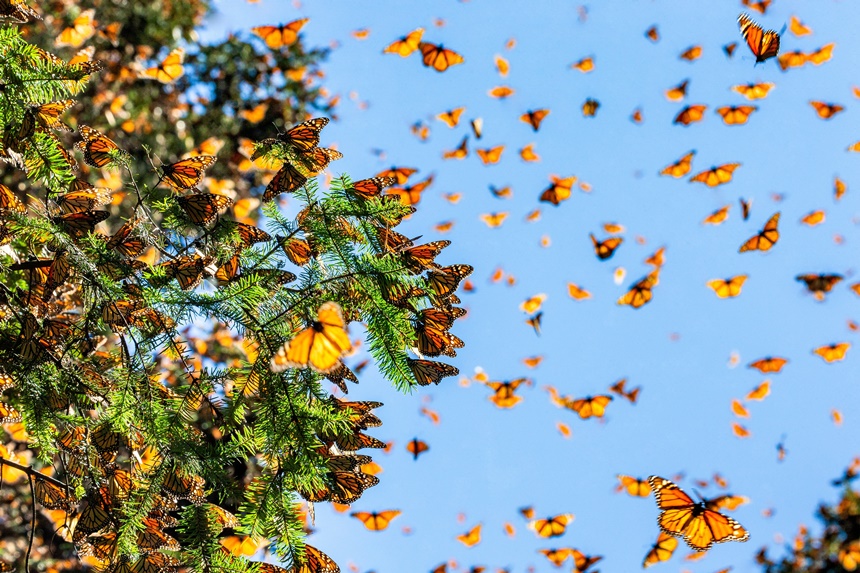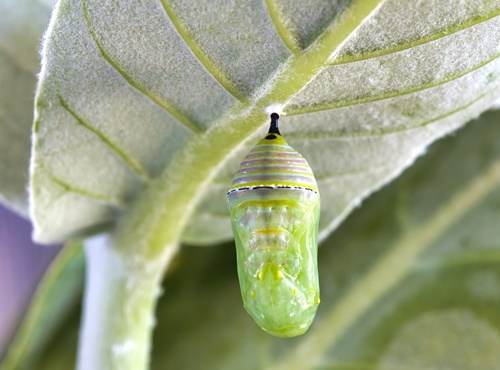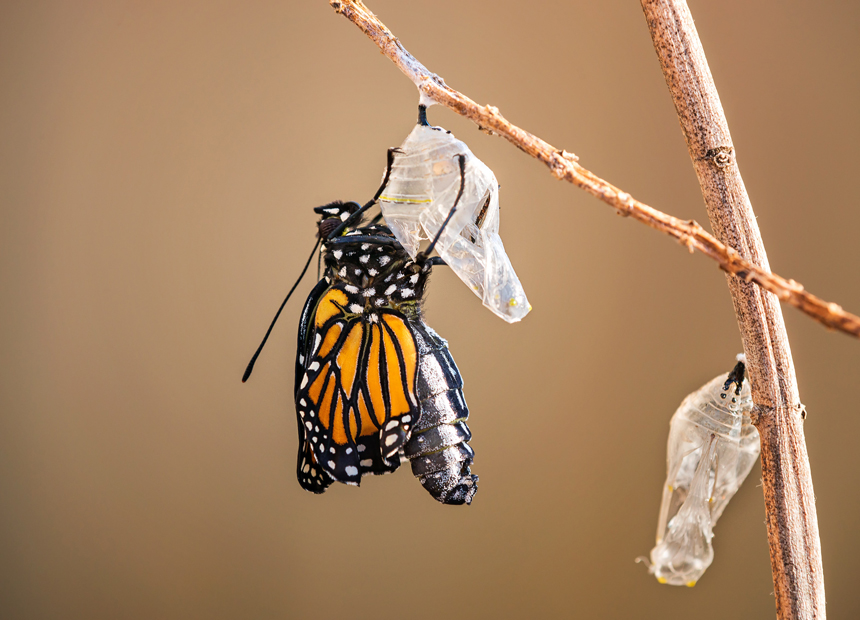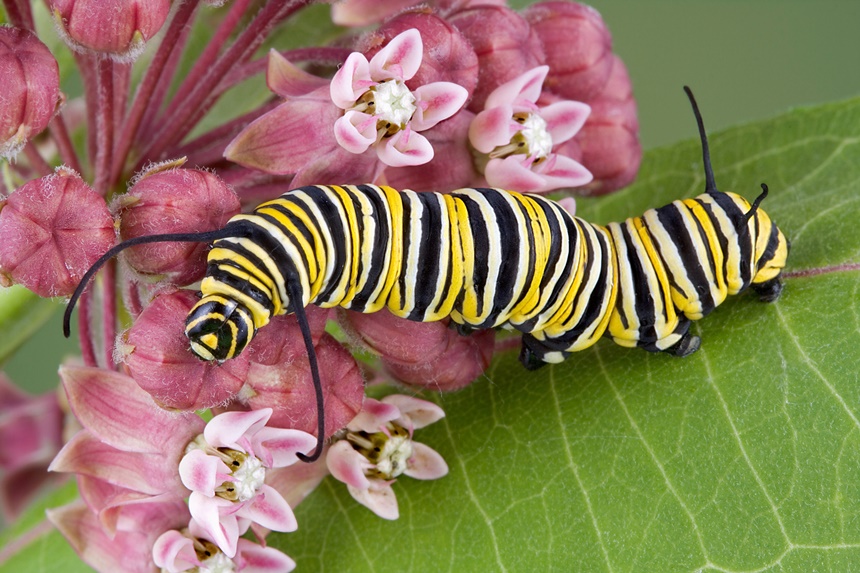When it comes to insects, we’re clearly biased. Often it’s for a good reason: At home, bed bugs take a bite out of our sleep quality, while outdoors, mosquitoes can drain all the fun out of camping trips, and may even pose health risks.
But when countless twinkling fireflies fill the air on summer evenings, or we glimpse the pale splendor of a giant luna moth on the wing, it can fill us with wonder and awe. And we marvel at the 3,000-mile North American monarch butterfly migration that is unmatched elsewhere in the world.

I’m partial toward moths and butterflies, and not just due to the fact they’re essential pollinators, or because many species are quite picturesque. It’s also because they have a lot to teach us about personal growth and transformation.
In order to make the leap from glorified maggot to graceful flying machine, a caterpillar, which is the juvenile stage of a moth or butterfly, has a complete meltdown. The Wicked Witch of the West, who melts at the end of The Wizard of Oz, gives a fairly good demonstration of what happens to caterpillars before they reach adulthood (except for them, something better comes back in their place).
The Wicked Witch of the West from The Wizard of Oz (Uploaded to YouTube by Warner Bros. Entertainment)
Once a caterpillar has stuffed itself for several weeks and has reached full size, it enters a pupal stage to change costumes. Moth caterpillars weave cocoons in which to pupate. These are typically made of silk exuded by the caterpillar, with bits of leaves or grass sometimes added in.
When a butterfly larva feels the urge to change, it forms a chrysalis, a translucent case made of special proteins given off by the caterpillar. The neat thing (for us) about a chrysalis is that its membranous skin allows us to see many of the changes as they happen inside it.

Once a caterpillar is snug as a bug inside a woolly cocoon or ensconced in an elegant chrysalis, the hard part begins for the future moth or butterfly. The chubby larva releases enzymes that dissolve its body. All of it. For a time, a cocoon or chrysalis is full of nothing but green caterpillar soup. Were it to be punctured at this phase, it would all drip out. Now that’s a meltdown.
As the caterpillar turns to goo, nearly all its cells burst open. This is sort of like taking apart a Lego car, let’s say, because you want to make a Lego plane. But instead of rearranging the blocks from the original car into the shape of an airplane, you smash them to dust, which you then use to make a new material that looks nothing like what you began with.
There are a few intact cells which make it through the enzymatic blender. Akin to stem cells, biologists have dubbed them imaginal cells. It’s wonderfully poetic, as if part of the caterpillar could always imagine flying.
In one sense, given that these cells are where the caterpillar stashes the butterfly DNA, imaginal cells do “imagine” the future winged adult. No one has yet figured out how imaginal cells take an amino-acid soup, the equivalent of our Lego-block dust, and fashion new kinds of cells from them.
Floating around in the caterpillar soup are a few chunky bits – flat, round-ish structures called imaginal discs. During pupation, each disc telescopes out to become an appendage such as a leg, wing, or antenna. It’s like instant body parts, which is pretty handy.
By the time a cocoon or chrysalis unzips and an adult moth or butterfly emerges to rub its bleary eyes, not a drop of caterpillar soup can be found. All of it was slurped up to make a gossamer-winged wonder out of a worm. Everything the caterpillar once was, now serves its new aeronautical life.

Like the caterpillar, achieving our best potential sometimes happens when parts of our self-image that hold us back from full maturity – for example, prejudices from our conditioning – are dissolved. In my experience, this is always hard. We commonly refer to difficult times, periods of grief and anguish, in terms of dissolution. A person might go to pieces, fall apart, dissolve in tears, break down, or have a meltdown.
Such a state can last for weeks, months, or even years. It might keep us from functioning well, if at all, in jobs or relationships. No one chooses heartache and loss, and yet many of those who survive ordeals come through changed for the better.
But positive outcomes are by no means certain, so the analogy isn’t perfect. Usually, it takes sound strategies, the help of others, and the passage of time to come through a meltdown stronger than before. However, at least we don’t have to turn to green slime in the process.
If you know someone who’s weathering a rough patch, maybe you could invite them over for a bowl of soup – anything but caterpillar – while you ponder meltdowns and transformations together.
Become a Saturday Evening Post member and enjoy unlimited access. Subscribe now




Comments
as always Paul, your writing is informed and created with passion and compassion. I wish you well during this difficult time in your life.